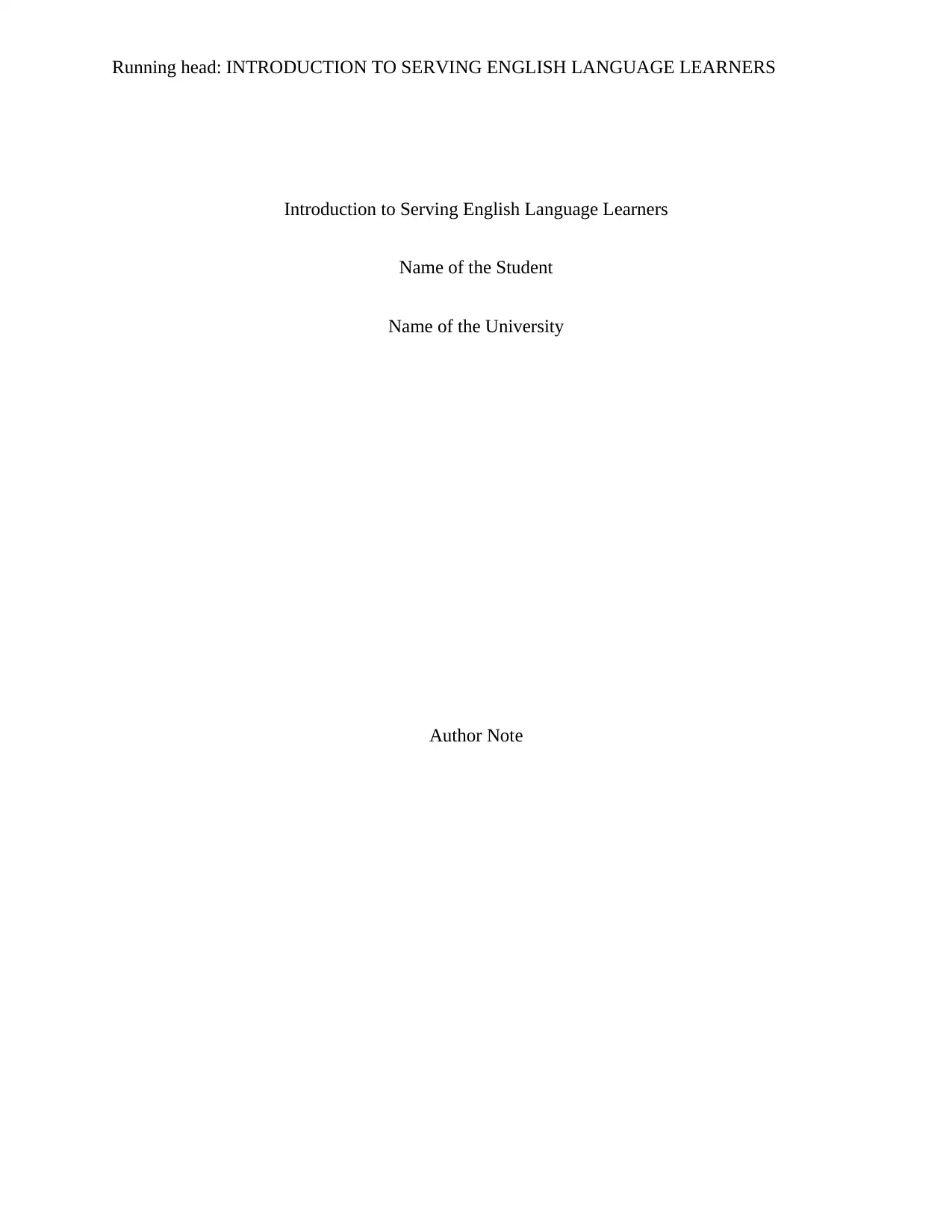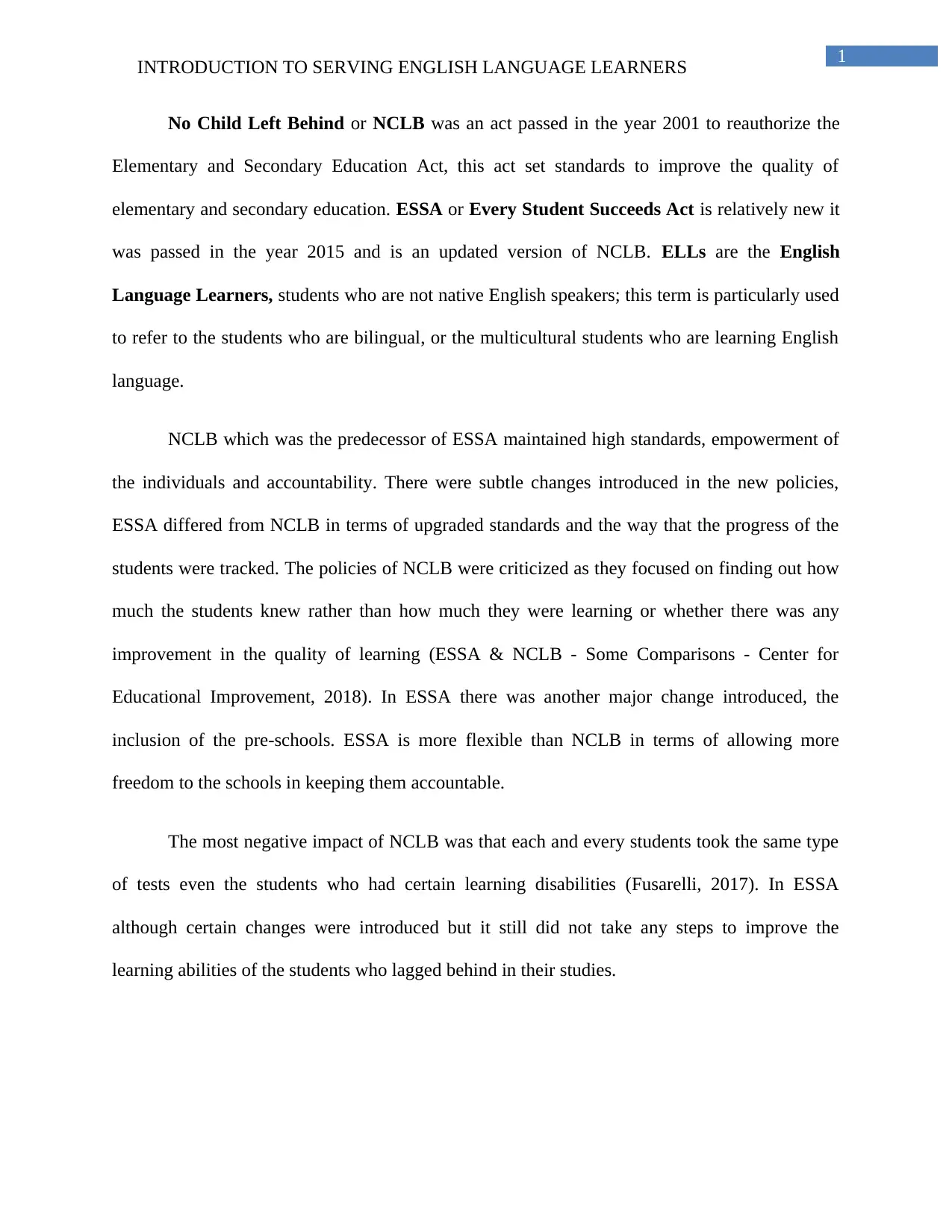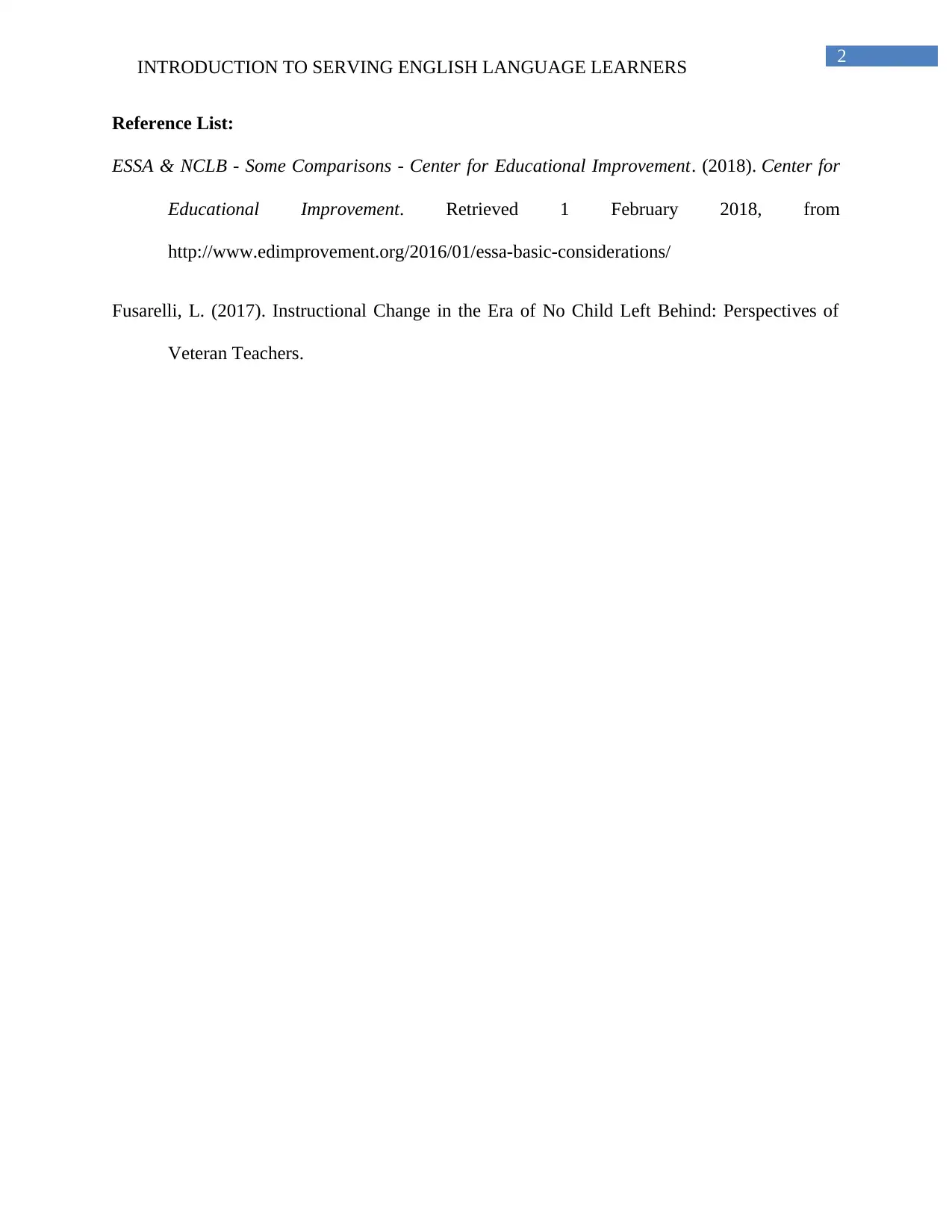Comparing NCLB and ESSA: Implications for English Language Learners
VerifiedAdded on 2020/05/16
|3
|385
|234
Homework Assignment
AI Summary
This assignment provides an overview of the No Child Left Behind (NCLB) Act and the Every Student Succeeds Act (ESSA), focusing on their implications for English Language Learners (ELLs). It highlights the key differences between the two acts, such as the shift from standardized testing to a more flexible approach in ESSA, and the inclusion of pre-schools. The paper also discusses the criticisms of NCLB, particularly its emphasis on testing and its impact on students with learning disabilities. The assignment aims to provide a comprehensive understanding of how these policies have shaped the educational landscape for ELLs, and how ESSA attempts to address some of the shortcomings of its predecessor. It also includes a reference list for further research.
1 out of 3









![[object Object]](/_next/static/media/star-bottom.7253800d.svg)